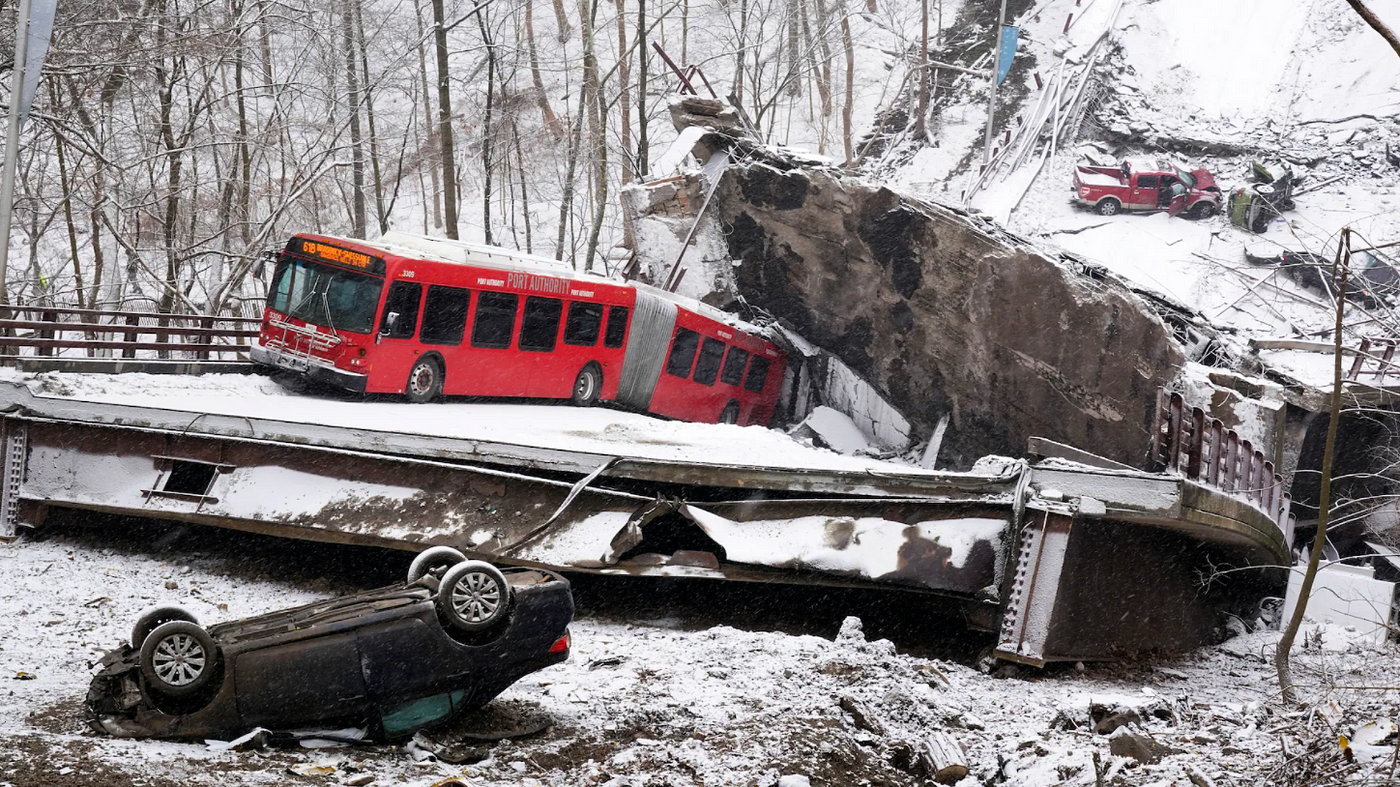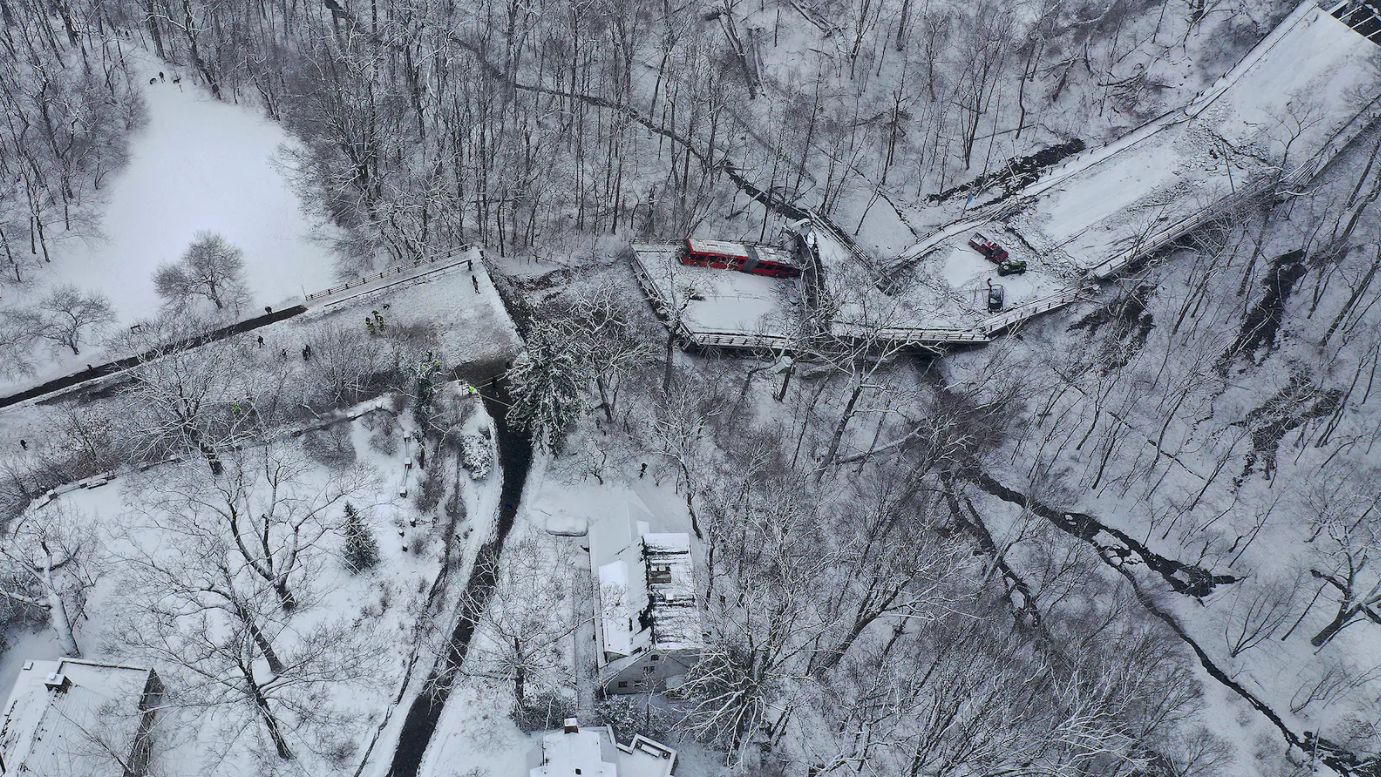
President Joe Biden was recently scheduled to speak in Pittsburgh about the need to repair the country’s infrastructure. That morning, almost as if on queue, the city’s Fern Hollow Bridge collapsed, injuring 10 people.
Pictures of a bright red bus hanging from a sloped section of the collapsed bridge made their way around social media, along with tired jokes about Infrastructure Week — an old jab at the Trump administration’s Groundhog Day-like promises to soon address roads and bridges.
Pittsburgh alone has almost 450 bridges. And Biden promised that “we’re going to fix all of them.” Interestingly, the Pittsburgh bridge was not included in Pennsylvania’s 2021 transportation improvement plan, which identifies projects that can get federal funding.
Years of inspection data show that this bridge had been consistently rated in poor condition for at least a decade. Unsafe bridges like the Fern Hollow Bridge are all too common in the United States.
As the news of the collapse spread online, a 2019 article showing that the state had diverted $4.2 billion from its transportation department’s program for road and bridge repair and given it to state police began circulating on social media, too. But prioritizing the policing of certain populations over poor roads and bridges isn’t a problem limited to Pennsylvania.
The American Society of Civil Engineers (ASCE) graded the country’s overall infrastructure at a C- in its 2021 report card. The ASCE report card indicates that 231,000 bridges need some kind of repair or preservation work, and the total price tag over 10 years is $2.6 trillion. According to a report by the American Road and Transportation Builders Association (ARTBA), one in three bridges in the US needs to be repaired or replaced.
During his Pittsburgh speech, Biden touted the $110 billion for fixing roads and bridges in his $1.2 trillion infrastructure bill. Earmarking more money for infrastructure is a good thing, but the amount being allocated to the problem doesn’t even begin to meet the scale of the issue. ARTBA estimates that a staggering 171.5 million vehicles travel over 45,000 structurally deficient US bridges each day. Seems bad.
In a White House fact sheet, the Biden administration says their infrastructure plans include enough money to repair the ten most economically significant bridges and the worst 10,000 smaller bridges. That leaves about 35,000 bridges still needing to be repaired or replaced. Drivers will have to either find a detour or pray that they don’t die driving across these deteriorating bridges.
 Image from the Washington Post
Our foreign policy focus means domestic decline
Image from the Washington Post
Our foreign policy focus means domestic decline
America’s crumbling infrastructure is the backdrop to Biden’s massive military buildup — a game of brinksmanship with Russia. Shipment after shipment of weapons–artillery, ammunition, anti-tank missiles, and more–are headed to Ukraine so they can point them at Russia for us.
It seems no matter who is president, there’s a military push about something somewhere. In nearly 250 years of history as a nation, America has been at peace for less than 20 years. We’ve been at war for more than 90% of our history.
It makes you wonder exactly how much of a priority it is to fix America’s infrastructure when, just a few months ago, Congress approved the biggest defense spending bill in US history. And it was more than Biden initially asked for–$25 billion more. This didn’t happen by accident. Americans weren’t out in the streets demanding more missiles and arms shipments across the globe. It happened because our political priorities are not decided by the American voters, but by a military-industrial complex that profits off of endless war.
The role of lobbying in rerouting money away from domestic priorities can’t be overstated. The military-industrial complex — sometimes referred to as the defense industry — spent $117,231,129 lobbying in 2021, according to Open Secrets.
But lobbying aside, America’s infrastructure is crumbling because those in control of the levers of power in the nation are focused on controlling various international spheres of influence, strategic resources, and supply chain routes. Much like the billions Pennsylvania diverted from its transportation department to state police, America is prioritizing imperial control abroad through military might over its dire infrastructure issues. And it’s not just roads and bridges. It’s the electrical grids, water, and much more. But deaths and injuries from all this crumbling infrastructure amount to acceptable collateral damage for increased police and military capabilities.
If we want to have a serious conversation about rebuilding American infrastructure, we’ll have to start with a conversation around diverting funding away from the police and the Pentagon.